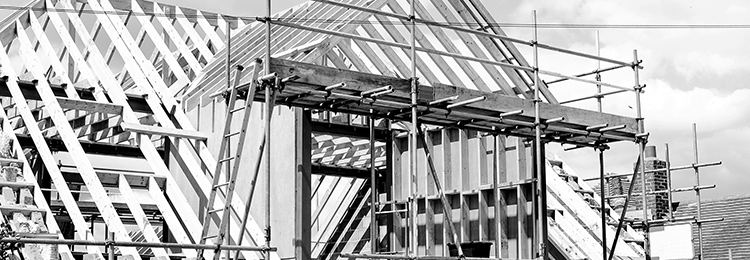When addressing the safety of your team, it’s important to think about workers’ overall health in addition to accident prevention. Many tasks in the construction industry can be labor-intensive, but with proper controls in place, all injuries are preventable.
Musculoskeletal disorders (MSDs) are some of the most common forms of health and safety challenges in the construction industry. MSDs encompass things like back injuries from manual handling of heavy loads and wrist injuries caused by repetitive work. According to OSHA, MSDs affect 30 percent of workers across construction trades.
Fortunately, there is a lot that employers can do to identify hazards, promote ergonomic lifting practices, and prevent MSDs and strains. Industry expert Adam DeVantier, Risk Management Consultant at Builders Mutual, shares five ways to get started:
1. Utilize Pre-employment Physicals
Safety starts on day one of the hiring process. While employers aren’t allowed to ask new hires if they’ve had previous injuries, they can have them go through a physical abilities test (PAT) to check their fitness for duty. PATs are good to consider when hiring for labor-intensive jobs.>
These exams are available through occupational health clinics and are intended to uncover any previous neck, shoulder, back, hip, or knee injuries. Tasks measure strength, flexibility, and stamina. Candidates perform a series of lifts up to 50 pounds, push and pull carts, and more. Builders Mutual has developed a partnership with the WorkSTEPS employment testing firm to aid policyholders in pre-employment screenings.
Once previous injuries have been ruled out, you can confidently hire and train employees.
2. Provide Basic Training and Resources
Preventing a back injury is much easier than repairing one. Because our backs are critically important to our ability to walk, sit, stand, and perform most physical tasks, preventing back injuries is one of the most important areas to cover in training. Most back pain arises from using our backs improperly, so learning basic rules about lifting, posture, and proper exercise can help keep your team in good shape.
Builders Mutual has created an infographic that covers preventive measures your workers can take to avoid injury and unnecessary wear and tear. This information should be covered during new-hire safety orientation and again during annual refresher training. We recommend posting the infographic in a highly visible area as a daily reminder.
3. Perform Job Safety Analysis
To prevent MSDs and other lifting strains, it is important to analyze the unique hazards on your job-site or within your trade through a job safety analysis (JSA). The JSA is a procedure your team should complete daily for the task at hand. Employee involvement in the identification and control of hazards is a critical component of the JSA process.
First, job tasks are broken down into individual steps which are listed on the JSA. Second, for each step, the hazards that could be encountered are documented. Third, the safe control measures are listed which can include the equipment, materials, tools and PPE required to complete the task safely.
Take a tile flooring project, for example. You may identify lifting injuries as a major hazard on the day you transport tile to the project. Decide the best way to divide the tile into lighter loads. On the day you actually install the tile, you may identify knee injuries as a major hazard. Regroup with your team and make sure everyone has knee pads.
4. Purchase Appropriate Equipment
Many injuries can be prevented through the use of equipment like forklifts, cranes, hand-operated lift trucks, elevators, and portable conveyor systems. With a little research, you’ll find that equipment is available for every task and trade. While you may think the equipment is expensive, the average cost for a back-injury claim is $75,000. Paying up front can help you avoid the much higher cost of an employee’s injuries later on.
5. Implement Stretching Programs
Finally, stretching programs are a great way to start the day on the job-site. Ask your employees to break into crews and stretch for 5 to 10 minutes first thing every morning. Any company can and should do this. Light stretching of legs, arms, and neck gets the blood flowing and loosens limbs to take care of tight muscles and reduce injury risk. It also allows your team to spend time together and address any concerns before beginning work.




 Find an
Find an